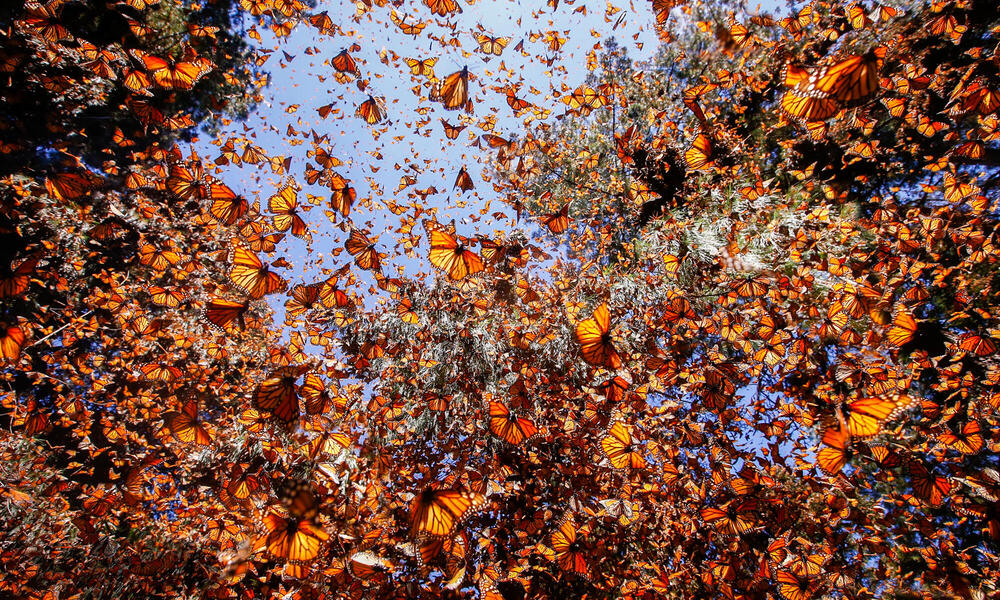Author:
Sokolova Elena
Short summary:
Every week or so we add a new regional Best Practice of place-based education to the global library - get inspired and create similar events, wherever you support kids and youth to get in touch with Mother Earth! This week we introduce two formats that teach about the migration of butterflies and toads; as well as their dependencies on trees.

Usually when we talk about migrations, we often refer to birds flying to warmer places in the winter. However, birds are not the only species that migrate every year. In this article, we discuss the migration paths of amphibians and butterflies, the obstacles they face, the reasons for their journeys, and the role of trees in ecosystems.
The migrations of butterflies and amphibians are two very different processes. We will focus in particular on two particular species: the Monarch butterfly (Danaus plexippus) and the Common toad (Bufo bufo). Monarchs and toads are both well known for their migration strategies, and they are very different from each other.
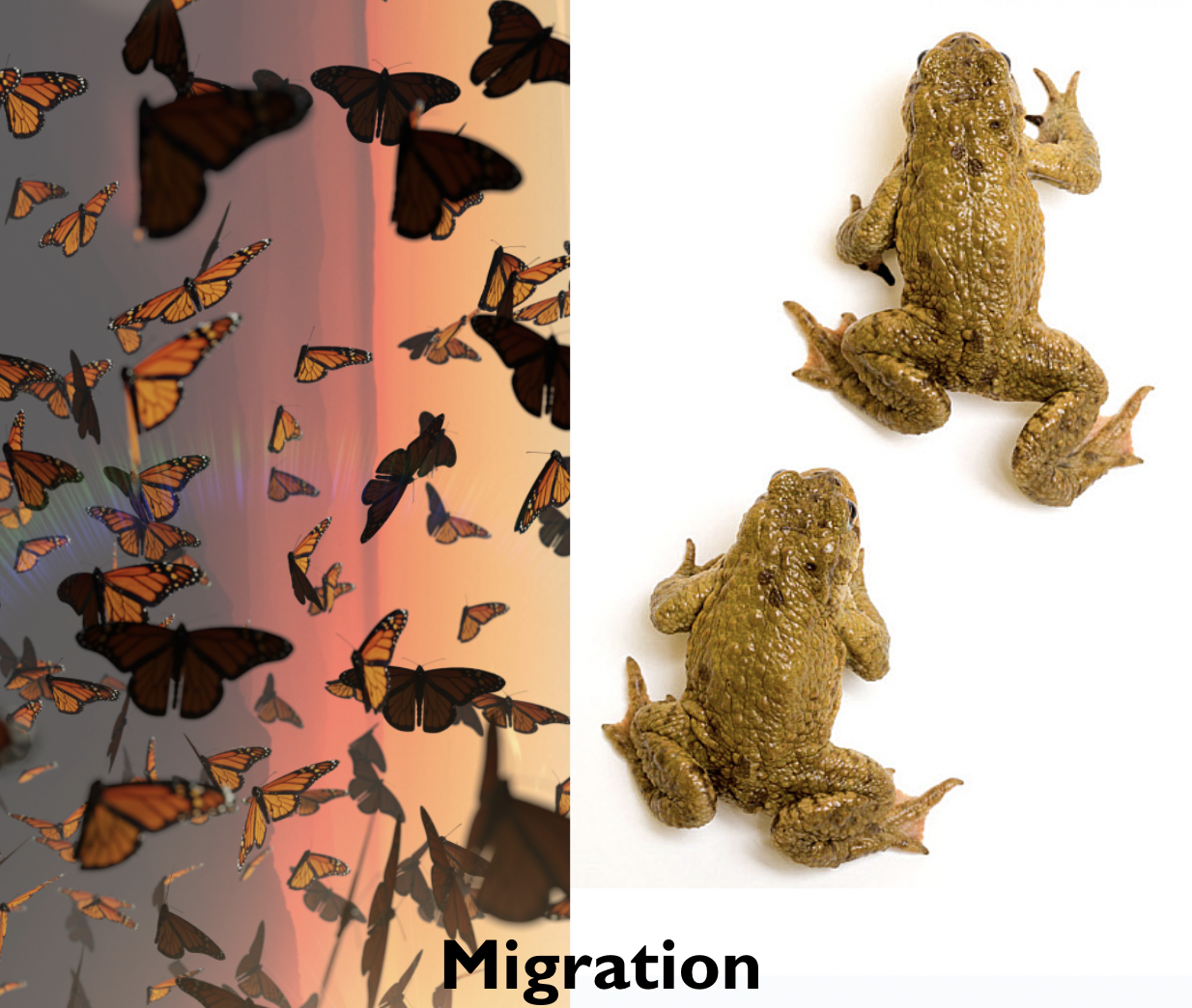
First of all, let's briefly talk about the differences between these two migrations.
The reason:
Amphibians migrate for breeding, while butterflies migrate due to temperature changes.
Time of migration:
The monarchs begin their southern migration from September to October, arrive at their roosting sites in November and then begin their northern migration in March.
The breeding migration of the common toad lasts about one month.
Distance: amphibians go to the nearest pond where they used to be tadpoles. Monarchs fly from southern Canada and the United States, to overwintering sites in central Mexico.
Individuals finishing the whole migration journey:
Amphibians that survived (one of the main obstacles are cars on the roads).
No monarch can finish the whole cycle of migration. It is a multi-generational migration, with individual monarchs only completing part of the full journey.
Despite the fact that these are completely different migrations, the main obstacle for both species is the same – global warming.
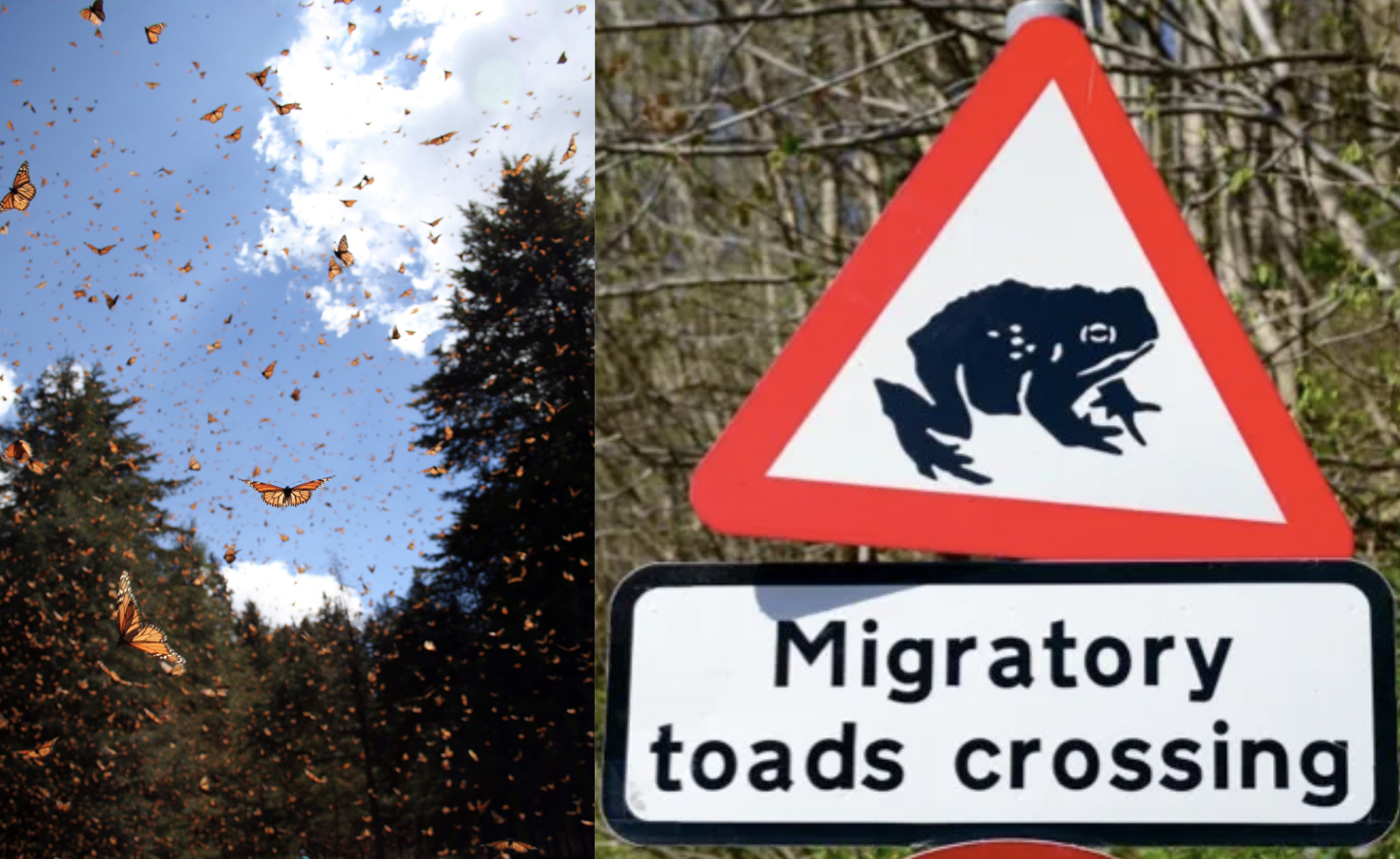
The migration of monarchs
In North America, monarchs migrate each summer and autumn to and from overwintering sites. They reside in colonies during their hibernation in the sacred fir forest.
The "sacred firs" (Abies religiosa), favorite trees of these butterflies, are named for their conical shape resembling clasped hands. Sacred firs provide a dense canopy sheltering thousands of butterflies. These trees protect the butterflies from winter rains and maintain a microclimate ideal for hibernation without risking frost damage.
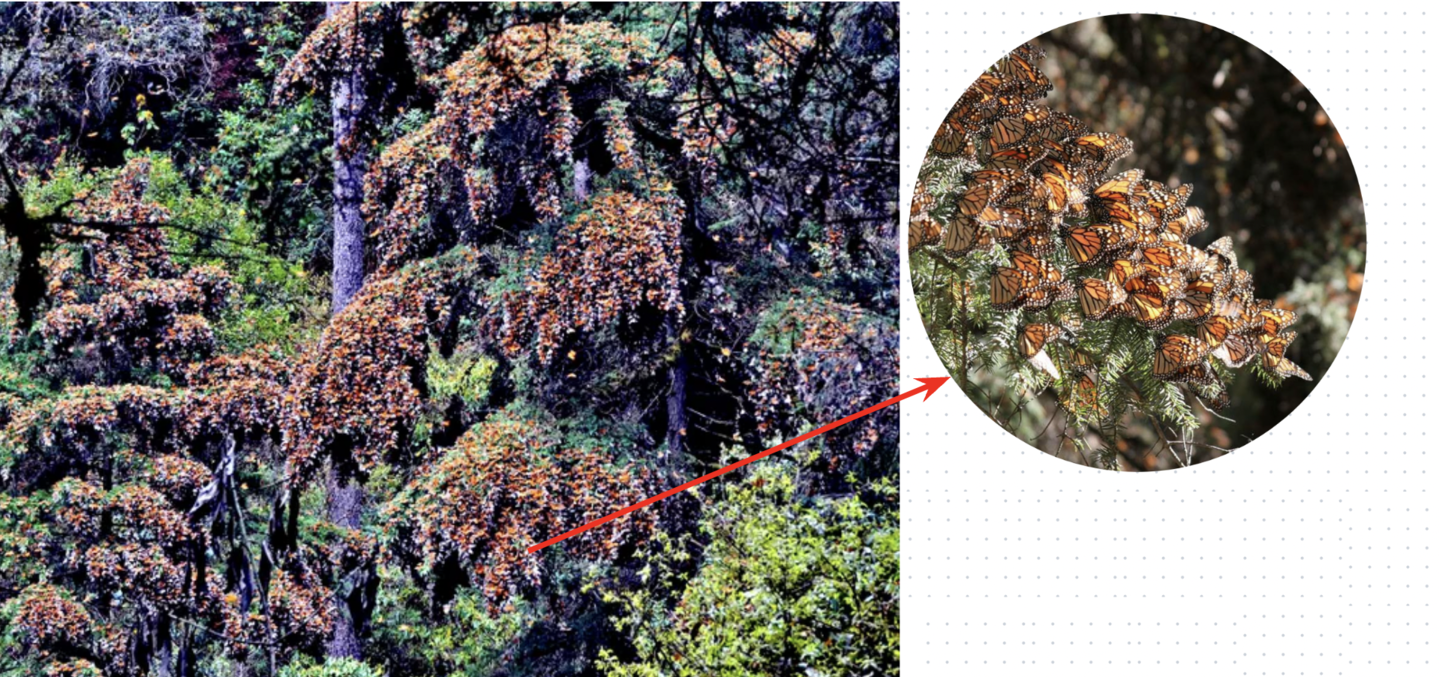
Scientists fear that climate change may kill off these firs by the end of the century. Monarch butterflies are facing a dire decline due to various human activities like logging, herbicide use, and habitat destruction. However, the most significant threat, is climate change. Extreme storms, prolonged droughts, and rising temperatures are endangering the forests crucial for the butterfly's winter sanctuary.
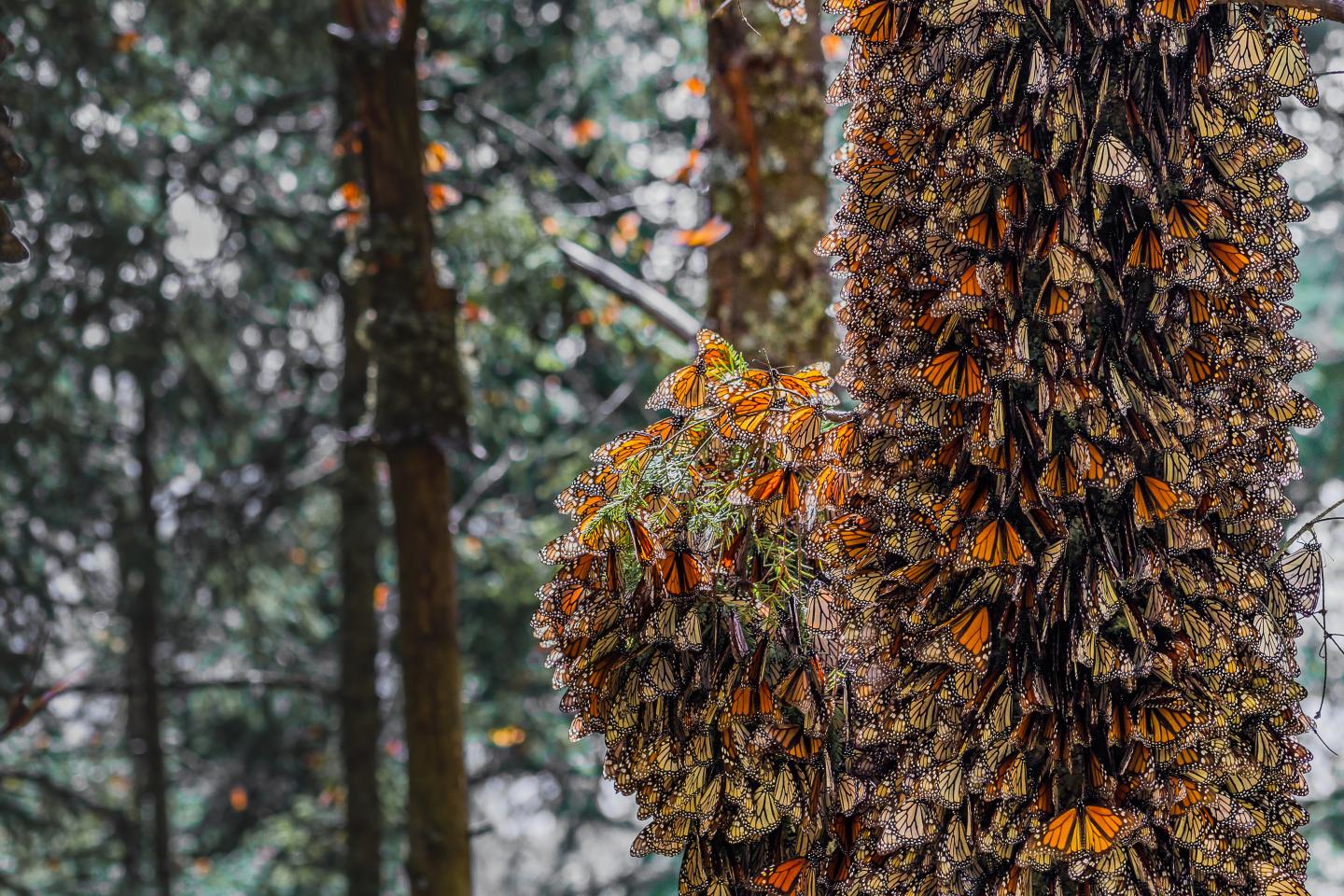
The migration of toads
If you like to take an occasional walk in the parks in the evenings, you've probably seen plenty of frogs and toads sitting or walking along park roads in early spring. When the winter is over and the water bodies are free of the snow amphibians wake up and begin their migratory journey. They go to the pond or the lake where they used to be tadpoles. The night when the mass amphibian migration started is called The Big Night. In this period they are very vulnerable. On the way to the pond they usually need to cross the roads. At night frogs and toads distinguish colour much better than we do but it is still hard to explain to them how to use traffic lights. That is why in early spring volunteers set up buckets along the roads and collect frogs, toads and newts to help them move to the wetlands and ponds safely. With the Green Steps team we participated in this activity. We started our migration journey with toads in the Kaiserwald and ended in Iceberg pond. On the one migrating path we collected more than 70 individuals!

They need to be fast because as the weather becomes hotter small water bodies dry out and amphibians are not able to reproduce anymore. That’s why they started the journey as soon as they woke up after winter hibernation. The global warming affects the amphibian life cycle, they have to wake up earlier to be able to reproduce. One of the ecosystem services provided by trees is cooling the air. The most obvious (but not the only one) way of cooling is a tree shadow. It is crucial for amphibians because they need water bodies to stay longer.
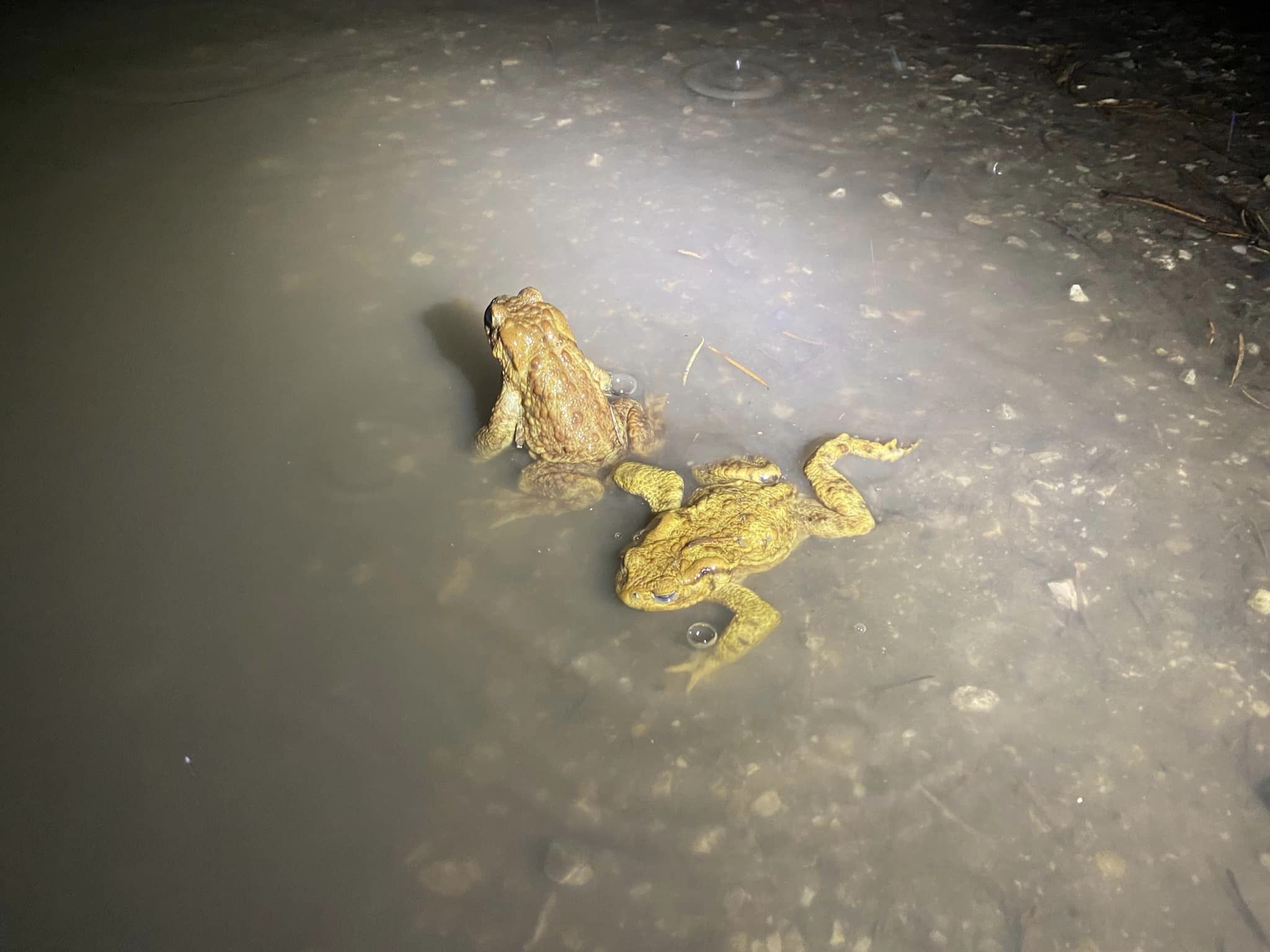
As it was mentioned before, the main obstacle for both species is the same – climate change. For amphibians rising temperatures are threatening the water bodies crucial for their reproduction and for butterflies storms and droughts are endangering their natural habitat. Trees play a vital role by providing essential ecosystem services crucial for the survival of all species on the planet. Expanding our efforts to mitigate the effects of climate change and protect these vital ecosystems is essential for the continued survival of amphibians, butterflies, and countless other species.
